
ARCHIVES OF COMPUTATIONAL METHODS IN ENGINEERING
Scope & Guideline
Driving Progress in Engineering through Advanced Computational Techniques.
Introduction
Aims and Scopes
- Computational Methodologies in Engineering:
The journal emphasizes the development and application of computational methods in engineering, including finite element methods, computational fluid dynamics, and optimization techniques, fostering collaborations between computational scientists and engineers. - Artificial Intelligence and Machine Learning Applications:
There is a strong focus on artificial intelligence (AI) and machine learning applications within engineering, including predictive modeling, optimization problems, and real-time data analysis, addressing contemporary challenges in various engineering sectors. - Multidisciplinary Approaches:
Research published in the journal often involves interdisciplinary approaches, integrating knowledge from fields such as materials science, biomedical engineering, and environmental engineering, showcasing the versatility of computational methods. - Emerging Technologies and Innovations:
The journal promotes studies involving emerging technologies, such as quantum computing and digital twins, that are poised to revolutionize traditional engineering practices and methodologies. - Sustainability and Environmental Considerations:
Papers frequently address sustainability issues, exploring computational approaches for optimizing resource use, energy efficiency, and environmental impact assessments in engineering projects.
Trending and Emerging
- Artificial Intelligence and Deep Learning:
There's a growing emphasis on the application of AI and deep learning techniques in engineering, particularly in areas such as predictive maintenance, structural health monitoring, and process optimization, reflecting the industry's push toward smarter solutions. - Quantum Computing Applications:
Research exploring the applications of quantum computing in engineering is on the rise, indicating a significant interest in harnessing quantum technologies to address complex engineering problems. - Digital Twin Technologies:
The concept of digital twins is gaining traction, with an increasing number of studies focusing on their development and application in real-time monitoring and predictive maintenance across various engineering disciplines. - Sustainability and Green Engineering:
There is an emerging trend towards sustainability-focused research, with an increasing number of publications investigating computational methods that promote energy efficiency and environmental sustainability in engineering practices. - Data-Driven and Surrogate Modeling:
The use of data-driven approaches and surrogate modeling techniques is becoming more prevalent, as researchers seek to enhance computational efficiency and accuracy in simulating complex engineering systems.
Declining or Waning
- Traditional Optimization Techniques:
There has been a noticeable decline in the frequency of publications focused solely on traditional optimization techniques, such as linear programming and basic genetic algorithms, as researchers increasingly favor more complex, hybrid, and nature-inspired optimization methods. - Basic Statistical Methods:
Publications employing basic statistical analysis as the primary focus seem to be waning, with a shift toward more sophisticated algorithms and machine learning approaches that offer enhanced predictive capabilities. - Conventional Material Modeling:
Research centered on conventional material modeling methods is becoming less prominent, as studies increasingly emphasize advanced materials and innovative modeling techniques that incorporate machine learning and data-driven approaches.
Similar Journals
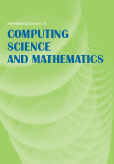
International Journal of Computing Science and Mathematics
Fostering Collaboration Across Computing and Mathematical DisciplinesThe International Journal of Computing Science and Mathematics, published by INDERSCIENCE ENTERPRISES LTD, is a pivotal platform for the dissemination of cutting-edge research in the intertwined disciplines of computing science and mathematics. With an ISSN of 1752-5055 and an E-ISSN of 1752-5063, the journal primarily serves the academic community engaged in applied mathematics, computational mathematics, theoretical computer science, and more, making significant contributions that resonate across various fields of technology and science. While the journal is currently categorized in the Q4 quartile for multiple related fields, including Applied Mathematics and Computational Theory, it continues to strive towards advancing the knowledge and practice within these areas. Spanning years from 2007 to 2010 and again from 2012 to 2024, the journal seeks to publish high-quality, peer-reviewed articles that not only address theoretical advancements but also explore practical applications of computing science in mathematical contexts, thereby fostering collaboration among researchers, professionals, and students alike. Please note that this journal is not available as Open Access, thus ensuring a curated content selection intended for dedicated research communities.

Communications on Applied Mathematics and Computation
Catalyzing Collaboration in the Mathematical SciencesCommunications on Applied Mathematics and Computation is a distinguished journal published by SpringerNature, dedicated to advancing the fields of Applied Mathematics and Computational Mathematics. With its ISSN 2096-6385 and E-ISSN 2661-8893, the journal has established itself as a critical platform for researchers seeking to disseminate their findings and engage with contemporary mathematical challenges. Recognized in the Q2 quartile of both Applied Mathematics and Computational Mathematics categories for 2023, it ranks impressively within its field, holding the 278th position in a pool of 635 journals for Applied Mathematics and the 89th out of 189 for Computational Mathematics, indicative of its scholarly impact. The journal facilitates open access to a plethora of pioneering research, promoting collaboration and innovation in a global academic community. With a commitment to high-quality publications from 2019 through 2024, Communications on Applied Mathematics and Computation serves as an essential resource for scholars and practitioners aiming to bridge theory and practical applications in mathematics.

Computer Science Journal of Moldova
Connecting Researchers to Shape the Future of TechnologyComputer Science Journal of Moldova, published by the Institute of Mathematics and Computer Science Academy, serves as a pivotal platform for disseminating research in the field of computer science since its inception in 1993. With a focus on a diverse range of subjects, including Artificial Intelligence, Computational Mathematics, and Software Engineering, this open access journal aims to foster innovation and collaboration among researchers, students, and industry professionals. Despite its current positioning in the lower quartiles as per the latest Scopus rankings, the journal remains committed to enhancing the visibility of regional research and addressing contemporary challenges through scholarly contributions. The journal’s open access model ensures that knowledge is freely available, promoting broader readership and impact within the international academic community. As it moves through the converged years from 2019 to 2024, the Computer Science Journal of Moldova continues to aspire toward empowering the next generation of computer scientists while enriching the global dialogue in this rapidly evolving field.
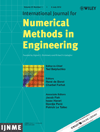
INTERNATIONAL JOURNAL FOR NUMERICAL METHODS IN ENGINEERING
Pioneering methodologies for the future of engineering.INTERNATIONAL JOURNAL FOR NUMERICAL METHODS IN ENGINEERING, published by WILEY, stands at the forefront of research in the fields of applied mathematics, engineering, and numerical analysis, as evidenced by its prestigious Q1 category rankings across these disciplines for the year 2023. With a long-standing legacy since 1969 and an impressive trajectory projected through 2024, this journal is dedicated to advancing the methodologies and applications of numerical techniques in engineering contexts. Researchers and professionals can access cutting-edge findings that contribute significantly to the optimization and innovation of engineering practices. Although it operates under a subscription model, the journal's impact factor and high citation rates underscore its vital role in influencing contemporary engineering research and education. Its rigorous selection process ensures high-quality, peer-reviewed articles that reflect the latest advancements and challenges in the field, making it an indispensable resource for academics, industry experts, and students alike.
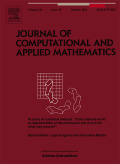
JOURNAL OF COMPUTATIONAL AND APPLIED MATHEMATICS
Advancing the Frontiers of Applied MathematicsJOURNAL OF COMPUTATIONAL AND APPLIED MATHEMATICS, published by Elsevier, stands as a premier platform for researchers and practitioners in the fields of applied and computational mathematics. With an impressive convergence history from 1975 to 2025, this journal has established itself as a crucial reference point for innovative mathematical theories, methodologies, and applications. Holding a distinguished position in Scopus rankings—#85 out of 635 in Applied Mathematics and #36 out of 189 in Computational Mathematics—it operates in the highly competitive Q2 quartile for both disciplines as of 2023. Although currently not designated as an open-access journal, it remains widely respected for its rigorous peer-review process and high-quality research contributions. Researchers and professionals seeking to advance their work and engage with cutting-edge developments will find this journal an invaluable resource, fostering a deeper understanding and collaboration within the mathematical community.
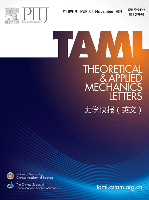
Theoretical and Applied Mechanics Letters
Bridging Theoretical Insights with Practical InnovationsTheoretical and Applied Mechanics Letters, published by ELSEVIER, stands as a premier journal in the field of engineering and applied mechanics, recognized for its rigorous peer-reviewed articles that advance theoretical and practical frameworks. With an impressive open access policy established in 2015, the journal enhances global accessibility to cutting-edge research across a range of disciplines including Aerospace, Civil, Mechanical, and Biomedical Engineering, along with Computational Mechanics and Ocean Engineering. The journal boasts an enviable position in the academic landscape, achieving a Q1 rank in several categories as of 2023, while being cited among the top percentiles in Scopus Ranks, specifically ranking #25 in Aerospace Engineering and #15 in Computational Mechanics. The journal aims to foster innovation by providing a platform for scholars and professionals to disseminate their findings, thereby bridging the gap between theoretical research and practical applications. By promoting a diverse range of topics and methodologies, Theoretical and Applied Mechanics Letters not only contributes to the advancement of engineering disciplines but also supports the global academic community in exploring sustainable and impactful engineering solutions.
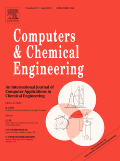
COMPUTERS & CHEMICAL ENGINEERING
Driving Breakthroughs in Chemical Engineering Through Advanced ComputingComputers & Chemical Engineering, published by Pergamon-Elsevier Science Ltd, stands at the forefront of research at the intersection of chemical engineering and computer science. With an ISSN of 0098-1354 and an E-ISSN of 1873-4375, this esteemed journal has been a vital resource since its inception in 1977, with coverage extending to 2025. It is categorized as Q1 in Chemical Engineering (miscellaneous) and Q2 in Computer Science Applications for 2023, highlighting its significant impact within these fields. Notably, the journal boasts impressive Scopus ranks, placing it in the 84th and 82nd percentiles for Chemical Engineering and Computer Science Applications, respectively. A treasure trove for researchers, professionals, and students alike, Computers & Chemical Engineering focuses on the latest trends and innovations in computational techniques, algorithm development, and their applications to chemical processes, ensuring an avenue for groundbreaking findings and collaborative dialogues. While not an open-access publication, it remains a critical reference point for those seeking robust, peer-reviewed research in the rapidly evolving landscape of chemical engineering and computational methods.
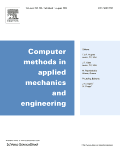
COMPUTER METHODS IN APPLIED MECHANICS AND ENGINEERING
Unveiling New Dimensions in Engineering through Computation.COMPUTER METHODS IN APPLIED MECHANICS AND ENGINEERING, published by Elsevier Science SA, is a premier journal that has significantly contributed to the fields of computational mechanics, computer science applications, mechanical engineering, and the mechanics of materials since its inception in 1972. With an ISSN of 0045-7825 and an E-ISSN of 1879-2138, this journal is recognized for its rigorous peer-review process and is consistently ranked in the Q1 quartile across multiple categories, including Computational Mechanics and Mechanical Engineering. Its impressive Scopus rankings place it in the top tiers of its field, with a percentile ranking of 98th in Computational Mechanics. Researchers, professionals, and students will find the journal's comprehensive scope and high-quality articles invaluable for advancing their knowledge and practices at the intersection of engineering and computation. Although not an open-access journal, its impactful contributions to both theoretical and applied research make it an essential resource for anyone involved in these dynamic fields.
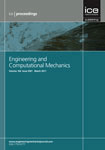
Proceedings of the Institution of Civil Engineers-Engineering and Computational Mechanics
Advancing the Frontiers of Civil Engineering and MechanicsProceedings of the Institution of Civil Engineers - Engineering and Computational Mechanics is a prestigious journal published by Emerald Group Publishing Ltd, dedicated to advancing the fields of civil and structural engineering, as well as mechanics of materials. With an ISSN of 1755-0777 and E-ISSN 1755-0785, this journal serves as a critical platform for disseminating innovative research and practical insights from 2009 through 2024. As part of its commitment to academic rigor, it is categorized in the Q4 quartile for both civil and structural engineering and mechanics of materials, reflecting a unique position in the scholarly community. The journal is essential for professionals, researchers, and students aiming to stay informed on current trends, methodologies, and applications in engineering and computational mechanics. By engaging with this publication, readers gain access to crucial findings that contribute to the advancement of infrastructure and materials science, vital for developing resilient and sustainable engineering solutions.
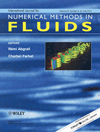
INTERNATIONAL JOURNAL FOR NUMERICAL METHODS IN FLUIDS
Charting New Territories in Computational Fluid MechanicsINTERNATIONAL JOURNAL FOR NUMERICAL METHODS IN FLUIDS, published by Wiley, has established itself as a leading platform for cutting-edge research in the fields of applied mathematics, computational mechanics, computer science applications, and mechanical engineering. With its ISSN 0271-2091 and E-ISSN 1097-0363, this journal is committed to disseminating high-quality, peer-reviewed articles that contribute to the advancement of numerical methodologies in fluid dynamics. Boasting a commendable 2023 impact factor that places it in the second quartile across multiple relevant categories, it provides insights into significant research dimensions that engage an audience of researchers, professionals, and students keen on the computational challenges of fluid flow. The journal's broad scope encompasses foundational and applied research, encouraging the exploration of new numerical techniques and algorithms. As an invaluable resource based in the United Kingdom, INTERNATIONAL JOURNAL FOR NUMERICAL METHODS IN FLUIDS remains dedicated to providing insights and fostering innovation in its domain, with a consistent publication history spanning from 1981 to 2024.